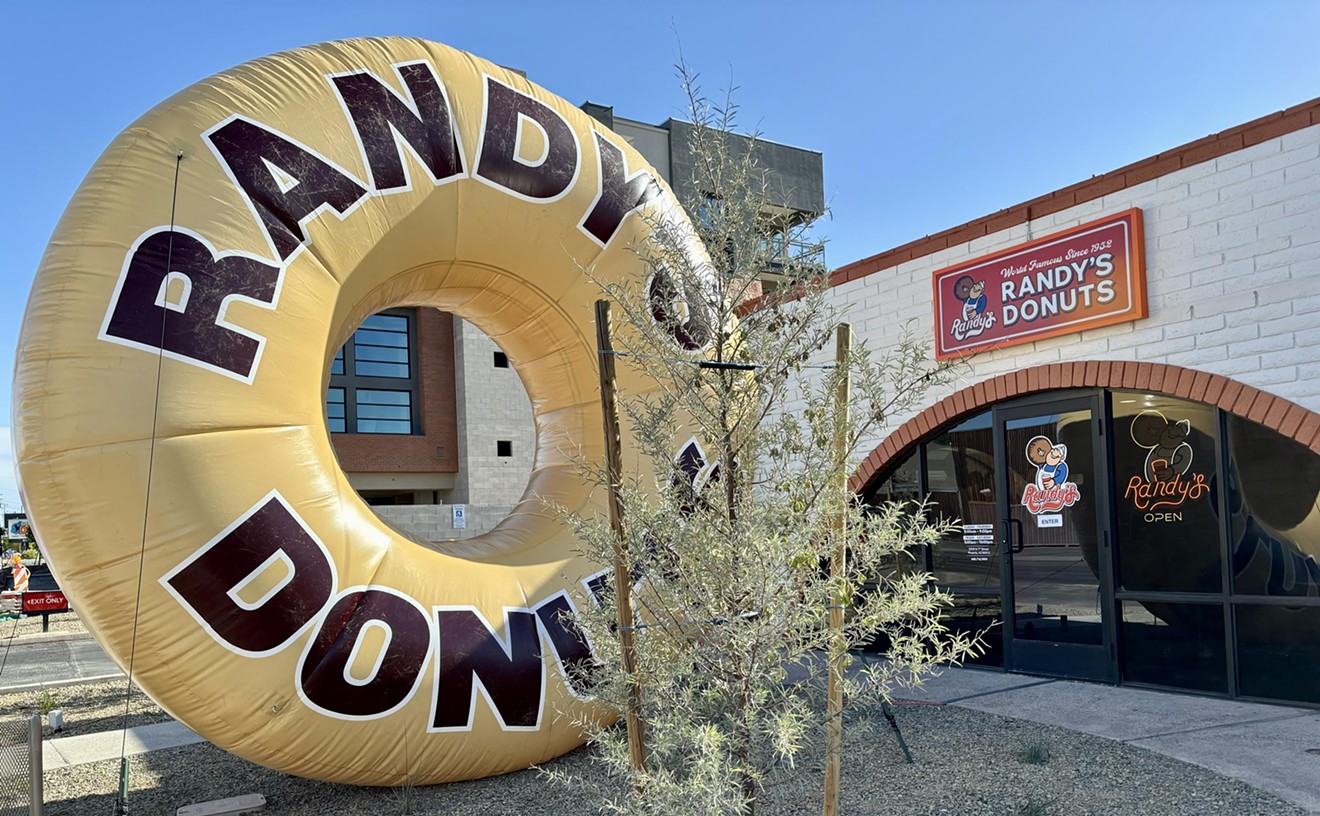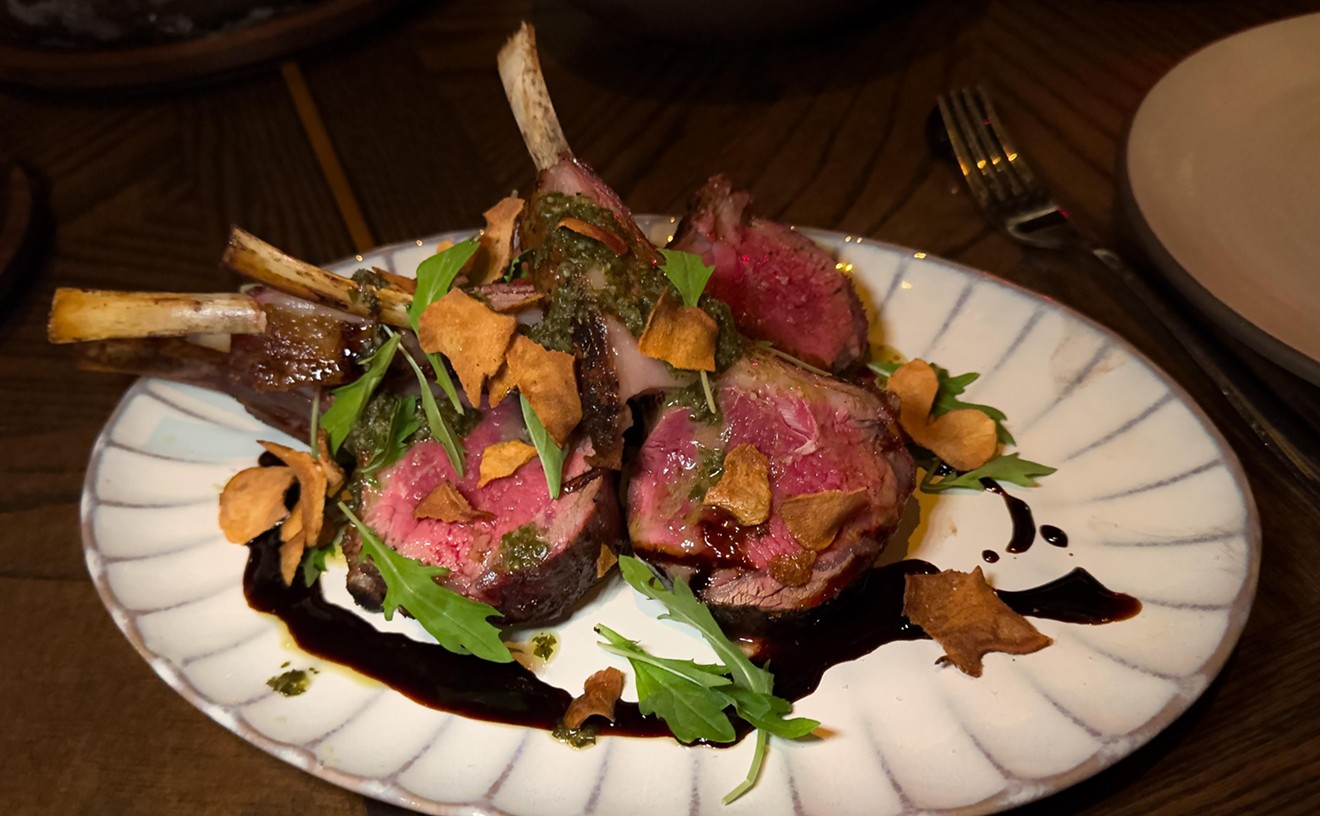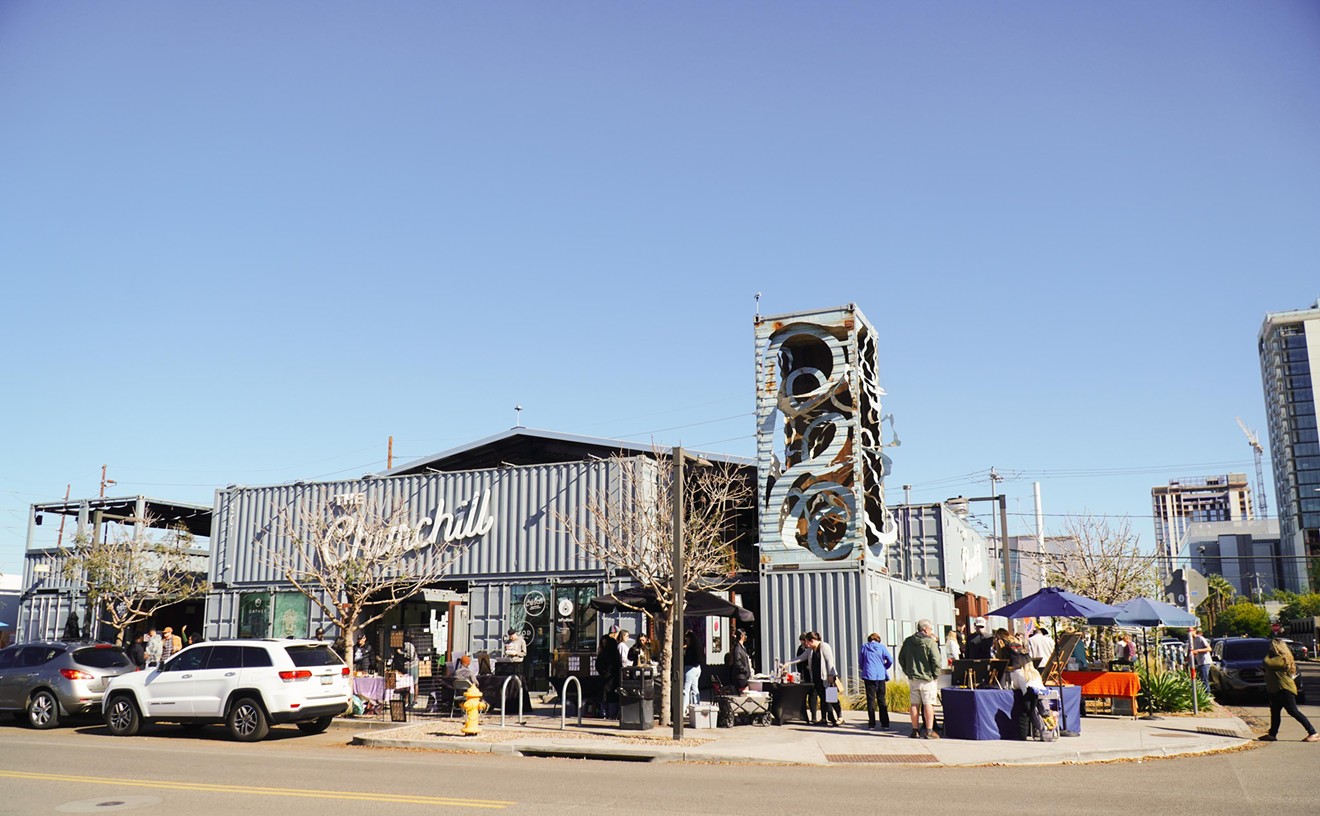This piece is the second installation of a new series called Roast Profiles, in which we meet we meet the local behind-the-scenes folks who make Phoenix coffee taste so amazing. For this installment, we chatted with Press Coffee’s master roaster, Fernanda Ibanez, about her approach to the art and craft of roasting coffee.
Tell us about your background. How did you get interested in coffee roasting?
I spent my teen years in Alaska, my elementary years in New York, and I was born in Argentina. A lot of different cultures are in my upbringing. Before coffee, I was in retail. I worked at a Fred Meyer in Alaska, which here is Fry’s. I worked at Walmart. I went to college and played basketball. I tried a stint at Office Depot — I unloaded their trucks for about a year, so warehouse work wasn’t new to me when I came to Press. I started in coffee with Starbucks in Alaska, but I never really had coffee until I started drinking Starbucks, and I liked their coffee and started learning. I really didn’t think of coffee then in the way that I do now. Nine years later, it’s different. Now it’s all coffee.
I apprenticed under Mitch [Montgomery], master roaster for Press Coffee before I was, for about a year. That was about three years ago. I was working for a company that was providing Intelligentsia coffee here in Mesa, and I started doing some research on specialty coffee through Intelligentsia. I ended up stumbling onto how we actually got the beans in the bags at the shop, so that kind of struck up a conversation with the store manager of that particular café. That’s how I started learning the history of coffee, then I met Steve [Kraus] at a [Latte Art] Throwdown. That’s how I became part of Press.
What is your approach to roasting? Do you have a particular style or process that you prefer?
I’ve come to notice that as Press’ roaster, I have developed a sense of sight and smell when it comes to roasting. Time versus temperature is key — they are the basics of roasting — but it’s how you use that time and that heat that changes the style. The way those two basics are applied can become a unique style. I’ve found mine, and mine is sight and smell. It’s a gut feeling.
Before I introduce the beans in a production setting, we ask for samples of green coffee through our green buyers from our farms. What I look for is potential in that bean. Once I sample roast, I cup them and I look for things: Can I make this coffee pop? Can I make this region stand out as a single origin? Would I be able to develop this particular origin to make an amazing espresso, or would it be a base for one of my drip coffees? There are a lot of characteristics that I look for in each bean that I get.
Once I have the bean sampled and we like it, once I start pushing it into production, the development factor of that bean becomes essential. I take a lot of time in roasting by sight and by smell. I look for specific smells and for specific details within the bean while it’s roasting. I write all my roast profiles down, minute to minute. I take into consideration how it changes within heat, within color, within smells.
At the end — when I feel a gut feeling more than anything — when I feel that bean is at its potential within the roast, then I drop it and we take it to the table and we cup it. We see if there are any improvements we can make.
What we base that on is what the farm has done with the bean already. Any bean that makes it to production status has been researched. I do a lot of research with what farm it came from, how it was processed, when it was harvested, what the farm’s tasting notes or aroma notes were when they sent it to the green buyer. All of our coffees have those notes when they come to our roaster. I like to base what I roast on what the farmers brought out of their crop. I like to give the region their props.
How would you characterize your experience as a woman in coffee roasting, which is a heavily male-dominated field?
For me, it’s been a lot of “let me prove myself.” But also, I am a roaster. I haven’t [heard], “Oh, wow, you’re a female roaster.” There hasn’t been a lot of discrimination, but there have been moments where I’ve felt like I had to prove myself. That was a learning experience. I really didn’t have to prove myself because the passion is there, the industry is there. There’s so much room for anyone to become a roaster if that’s their passion. There’s so much to learn and so many individuals that I know personally that are willing to teach. I was one of the lucky ones, to be able to teach this craft to one of our coworkers within Press. As far as quality and product that I put out with the shops, my smile and my gratitude comes when I walk into the stores and our baristas are like, “Dude, this Kenya’s bomb,” and they give me the notes, and when I hear a customer say, “Wow, this is amazing. Where do you get your beans?” and I have the opportunity to say, “This is where,” and they’re amazed by it.
Being a female is even more awesome. It give us females in this industry a boost to do what we love. If it’s what you love, do it. It is a male-dominated industry, but there are so many amazing females in this industry that I’ve come into contact with, that that’s almost obsolete. This industry is booming. I think it’s grown tremendously. I’m happy and proud to be part of it as a roaster.
I was able to pass that on to one of our coworkers, Jenna, who was my apprentice. It was a female-run roaster, production and all. For us, it’s our passion, it’s our love, it’s our job, it’s what we do day in and day out.
Have you ever had a life-changing coffee moment?
It was a Sumatra. I hold that coffee dear to my heart because it taught me how to not go crazy in trying to develop so much within a coffee. It literally took three months of dissecting that bean: how to make it better, how to develop it more, how to bring in that particular profile of characteristics and notes, how to make it pop as a single origin coffee, how to make it pop as an espresso. That’s the point of madness. And that coffee isn’t the favorite when we put it on the cupping table. It isn’t the coffee that many of our top industry people favor, because we have such amazing coffees on the higher end of quality. But I remember that day that I got to roast it, when I got to play with it for the first time. That was the turning point in coffee for me. It taught me a lot, just messing around with that particular bean from that particular region, it taught me what to look for in other regions. It taught me a lot. Those three months were intense, Nanda went a little crazy, but she learned.
What makes roasting in this climate unique?
When we get thunderstorms or monsoons, the beans tend to want to expand more than they should. They go faster in the roaster than I’m used to when it’s just hot. Also, I do a lot of [quality control] with how I order, and how much I order. In the summer I tend to order less bags so that they don’t stay in the warehouse for any longer than maybe a week or a week and a half. I keep the warehouse at a certain temperature, but it’s not a climate-controlled warehouse, so I could run into high and hot temperatures and I don’t want my beans to dry out or anything like that. High temperatures change how you roast a bean. I roast at lower temperatures and use more air flow effects in the summer than I do in the winter, so my roasts become a little longer in time than they do in the winter.
What sets Press Coffee apart from the rest?
We’re a rare breed. The reason I say that that is because all of our baristas, all of our management team, all the way up to Steve, we aim to have the best quality in everything that we do. We educate ourselves till we burst. I want our customers to taste and smell the difference in each brew that we have in our shops.
I hate using the term “this is my job” because I’m getting paid to do what I love. We are all getting paid to do what we love, and I think that comes out and shows through to our customers. We can talk your ear off about coffee all day and we won’t get bored. I think our style is education — we educate ourselves, in order to educate our customers, our baristas. We don’t just do basics. We go far and beyond that to give you an amazing experience.
I’m just grateful to be in this position here in Arizona. What I love about this industry is that I’ve been able to watch it grow here in Arizona. We’re on the map — we’re not considered Seattle or Chicago or LA or anything like that yet, but we’re getting there. To be able to see that transition in this industry has been amazing to me. It’s going to be awesome to see it develop even more in the next few years.
Check out our past Roast Profiles:
Matador Coffee’s Mario Martusciello
[
{
"name": "Air - MediumRectangle - Inline Content - Mobile Display Size",
"component": "18478561",
"insertPoint": "2",
"requiredCountToDisplay": "2"
},{
"name": "Editor Picks",
"component": "16759093",
"insertPoint": "4",
"requiredCountToDisplay": "1"
},{
"name": "Inline Links",
"component": "17980324",
"insertPoint": "8th",
"startingPoint": 8,
"requiredCountToDisplay": "7",
"maxInsertions": 25
},{
"name": "Air - MediumRectangle - Combo - Inline Content",
"component": "16759092",
"insertPoint": "8th",
"startingPoint": 8,
"requiredCountToDisplay": "7",
"maxInsertions": 25
},{
"name": "Inline Links",
"component": "17980324",
"insertPoint": "8th",
"startingPoint": 12,
"requiredCountToDisplay": "11",
"maxInsertions": 24
},{
"name": "Air - Leaderboard Tower - Combo - Inline Content",
"component": "16759094",
"insertPoint": "8th",
"startingPoint": 12,
"requiredCountToDisplay": "11",
"maxInsertions": 24
}
]










